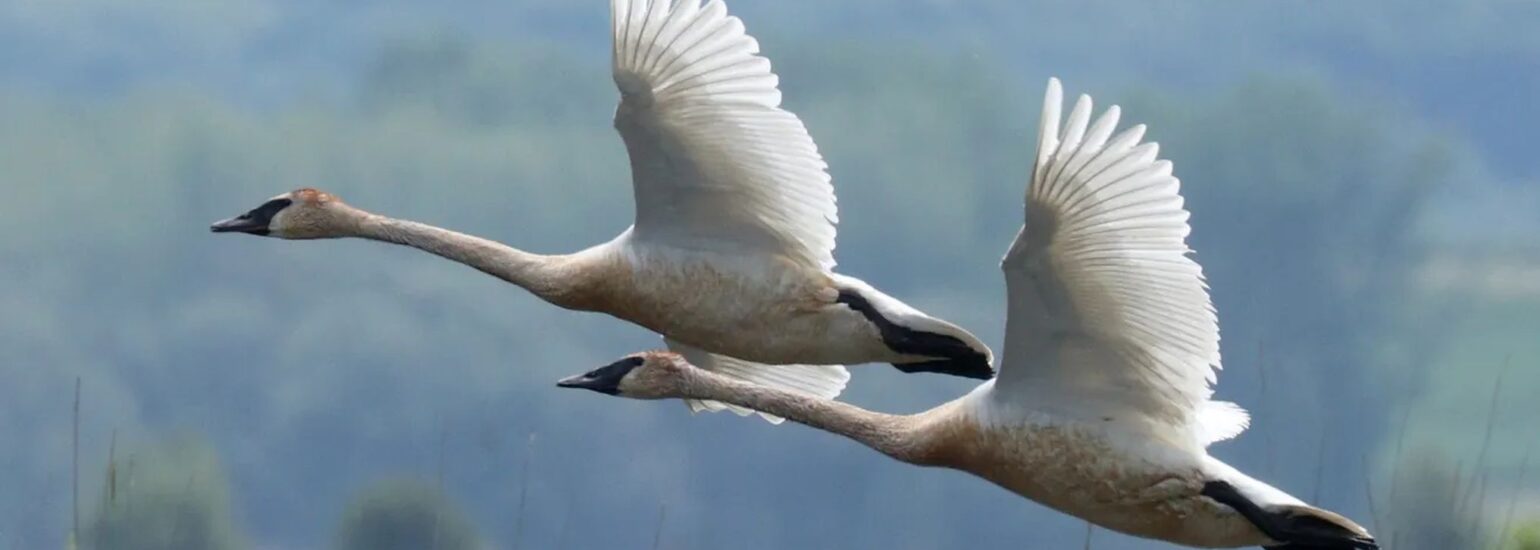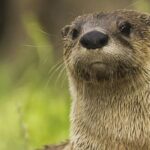A call like no other
The beaver builds the ponds that the trumpeter swan looks for. The swan glides in with a wingspan of 8 feet. This bird is the biggest waterbird in the air, the original jumbo jet. They’re a graceful big bird, a cursive shape made up of bright white feathers and black legs, feet, and bill.
These swans suffered from the overhunting of beavers. Today, as beavers build back in numbers, so do Trumpeter swans.
Naturally family oriented, the male does the majority of sitting on the eggs and pairs usually mate for life. Fresh-born chicks start swimming the same day as their birth. Flying takes longer, about 3-4 months. They can live fairly long lives, from 15 to 33 years.
Listen to the sound of this swan’s call. The name makes sense once you hear it. It’s a gorgeous vocalization, like a soft honking bugle in the early morning sunrise bouncing over smooth water. A few swans together sound a little like an improv brass ensemble. Officially this bird is said to sound like a trumpet or French horn.
Even though they have short legs set behind their center of gravity, they can walk more than a mile at a time, followed by youngsters less than a week old. To get their bodies up into the air, they start running on top of the water and get up to 30 mph to create lift-off. They need about 100 meters to get airborne. Once in the air, they climb very high to hit a cruising altitude of around 6,000 to 8,000 ft.

Trumpeter swans’ scientific name is Cygnus Buccinator. Baby swans are called cygnets. There is a constellation in the Milky Way galaxy called Cygnus (Latin for swan). It is also known as the Northern Cross.
Beaver structures that are surrounded by water are the ideal nesting sites for these swans. They build their nests atop the raised lodges or dams, which provide a sort of moat situation for the swan family to nurture and raise their young safely. To add their own touches, they like to use materials such as feathers, cattails, and grass. They build the nest into a large bowl shape and will return to reuse nesting sites.
Slow moving rivers with lots of vegetation are extremely inviting to these birds and beavers make good on this need by carving out areas that slow down water and encourage plant growth. They really are stewards for creating landscapes that provide safe harbor for so many other important species.
Trumpeter swans are flat-out gorgeous, graceful, magnificent birds and we are lucky to have them in our world.
-Mary Ann Petersen, Guest Blogger
Mary Ann is a writer living in Eugene, Oregon. In a past life she may have been a beaver. If not, she was definitely a kingfisher or a crow.
www.maryannpetersen.com



